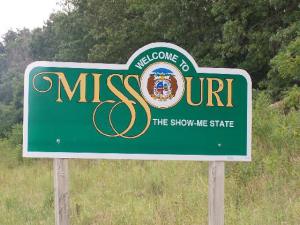The Looming Attack on Damage Caps in Missouri Medical Malpractice Cases
The issue of damage caps is an area of ongoing litigation in Missouri. A new case has just been handed down by the Missouri Supreme Court which provides some clarity on the issue of statutory damage caps on non-economic damages but fails to fully resolve the issue. Currently, Missouri has a $406,800.00 cap on non-economic damages in medical negligence cases not resulting in death and a $711,900.00 cap non-economic damages in medical negligence cases resulting in death. Mo. Rev. Stat. §538.210 (2015). The cap increases annually at a constant rate of 1.7%. The above numbers are current as of January 1, 2016 but will increase again on January 1, 2017.
In April of 2016, the Missouri Supreme Court affirmed the constitutionality of the statutory cap on wrongful death causes of action arising out of medical negligence. Dodson v. Ferrara, — S.W.3d —-, 2016 WL 1620102 (Mo. banc 2016) affirming Sanders v. Ahmed, 364 S.W.3d 195 (Mo. banc 2012) (a copy is attached). However, the Missouri Supreme Court did not address the constitutionality of the statutory cap on medical negligence causes of action not resulting in death. Id. The question of the constitutionality of the statutory cap on medical negligence not resulting in death, set forth in Mo. Rev. Stat. §538.210 (2015), is still undecided and Dodson leaves open a fairly strong argument the non-economic damage cap on medical negligence cases not resulting in death is unconstitutional. See Dodson, 2016 WL 1620102 at 6.
To understand the Court’s ruling in Dodson and how it leaves open an attack on the constitutionality of damages caps on medical negligence not resulting in death, it is necessary to have some background on the history of personal injury claims and wrongful death claims in Missouri. Dating back to before 1820, Missouri courts recognized a common law cause of action for medical negligence. Id. However, prior to 1855, there was no cause of action for wrongful death in Missouri. Id.
The arguments about the constitutionality of statutory damage caps hinges on an 1820 amendment to the Missouri Constitution. In 1820, the Missouri Constitution was amended to provide a constitutional right to a jury trial. Id. The amendment states the right to a jury trial should remain inviolate. Id. citing Watts v. Lester E. Cox Medical Centers, 376 S.W.3d 633 (Mo. banc 2012); and Lewellen v. Franklin, 441 S.W.3d 136 (Mo. banc 2014). Because the right to a jury is to remain inviolate, if there was a common law cause of action available in 1820 which provided a right to a trial by jury, the right shall not be violated by modifying the jury’s right to award damages. Id. Because capping of damages in common law causes of action available in 1820 modifies the jury’s ability to award damages, the caps, as applied to those causes of action, have been found to be unconstitutional under the Missouri Constitution. Id. As a result of Watts, for a time, Missouri was without a cap on non-economic damages in common law medical negligence cases, as the cap set out in Mo. Rev. Stat. §538.210 (2005) was held unconstitutional.
However, the Missouri Supreme Court has continuously held the statutory caps on wrongful death causes of action arising out of medical negligence are constitutional. Dodson, 2016 WL 1620102 and Sanders v. Ahmed, 364 S.W.3d 195. The Court in Dodson and Sanders held the caps on non-economic damages in a wrongful death claim are not unconstitutional because Missouri has never recognized a common law cause of action for wrongful death. Id. In 1820, there was no cause of action for wrongful death; therefore, there was no right to a jury trial. Id. Because there was no right to a trial by jury, there could be no violation of the right by capping the amount a jury can award for non-economic damages. See Id. As such, the caps on non-economic damages in cases involving statutory causes of action continue to be enforced by the courts. Id.
In 2015, the legislature revised Mo. Rev. Stat. §538.210 to reinstate caps on non-economic damages in medical malpractice claims. To address the issues raised in Watts, the legislature repealed the common law cause of action for medical malpractice and replaced it with a statutory cause of action. The statute defines the elements of the cause of action as: 1) the health care provider failed to use that degree of skill and learning ordinarily used under the same or similar circumstances by members of the defendant’s profession; and 2) that such failure directly caused or contributed to cause the plaintiff’s injury or death. Mo. Rev. Stat. §538.210.1 (2015). These are the same elements of the common law cause of action.
The question remains to be determined if the relabeling of a common law cause of action as a statutory cause of action will be successful in maintaining damage caps in medical negligence cases not resulting in death. Dodson seems to be hinting the Missouri Supreme Court believes the revision to Mo. Rev. Stat. §538.210 does successfully address the constitutional issues raised previously in Watts. The court in Dodson states, “[t]he General Assembly has the right to create causes of action and to prescribe their remedies. The General Assembly may negate causes of action or their remedies that did not exist prior to 1820.” Dodson, 2016 WL 1620102 at 6 (emphasis added). This suggests the General Assembly does not have the right to negate causes of action that existed prior to 1820. Because the medical negligence claim existed prior to 1820, it will likely be argued that the renaming of the cause of action as a statutory cause of action does not mean Missourian’s constitutional right to a trial by jury is abrogated.
The argument against damage caps applied to the statutorily created cause of action for medical negligence not resulting in death is further developed in the dissent by Judge Teitelman to Dodson. Judge Teitelman argues the right to a jury trial attaches to “a modem statutory cause of action when the statutory cause of action is a civil action for damages that is ‘analogous to’ or a ‘modem variant of’ the kinds of cases triable by juries when the Missouri Constitution was originally adopted.” State ex rel. Diehl v. O’Malley, 95 S.W.3d 82, 87 & 92 (Mo. banc 2003); see also Briggs v. St. Louis & S.F. Ry. Co., 20 S.W. 32, 33 (Mo. 1892). The argument in Dodson is defeated as applied to medical negligence resulting in death because the majority found the wrongful death cause of action was not analogous or a modern variant of a cause of action available in 1820. Dodson, 2016 WL 1620102 at 6. Therefore, the right to a trial by jury did not attach and the Missouri Constitution was not violated. Id.
However, Judge Teitelman’s argument against damage caps, as applied to the damage cap on the statutorily created cause of action for medical negligence not resulting in death in Mo. Rev. Stat. §538.210, seems to have more traction. When the legislature created the statutory cause of action for medical negligence, the elements of the cause of action stayed the same as the common law cause of action recognized prior to 1820. The statutorily created cause of action is likely “analogous to” or a “modern variant of” the common law cause of action and applying the damage cap would likely be found unconstitutional because it violates the jury’s right to assess damages.
The Court in Dodson, while upholding the statutory cap on damages applied to non-economic damages in a medical negligence case resulting in death, was very hostile to the damage cap in general stating, “[t]his Court recognizes the inadequacy of $350,000 to compensate the Dodson family for the tragic death of their loved one, particularly in light of the amount awarded by the jury.” Id.
While Dodson affirms the statutory damage caps on wrongful death causes of action, it leaves uncertain the application of statutory damage caps to the statutory cause of action created in Mo. Rev. Stat. §538.210 for medical negligence not resulting in death. In this case, the damage cap on non-economic damages applies to the wrongful death claim plaintiff has made and at this time the cap still applies to the survivor action. However, the latter is subject to attack on constitutional grounds.
The content of this blog is intended for informational purposes only, and is not intended to solicit business or to provide legal advice. Since the laws of different states vary, the information on this blog may not apply to every reader. You should not make, or refrain from making, any legal action based upon the information contained on this blog without first seeking professional counsel. Your use of the blog does not create an attorney-client relationship between you and Pitzer Snodgrass, PC, or the authors. The choice of a lawyer is an important decision and should not be based solely on advertising.














